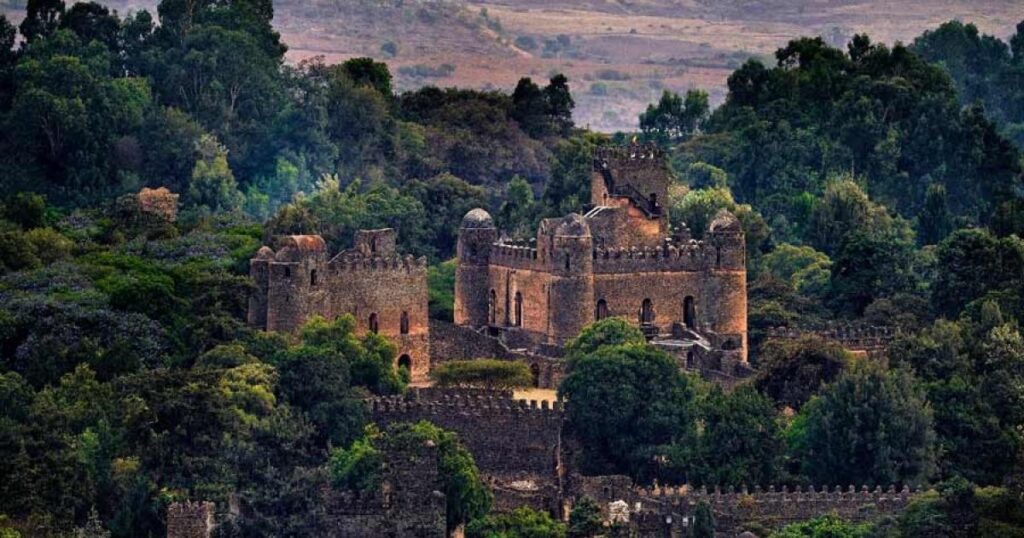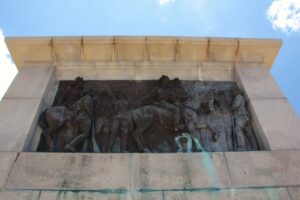Fasil Ghebbi in Gondar – Castle Complex and UNESCO Site
Nestled in the heart of Gondar, Ethiopia, Fasil Ghebbi is a remarkable fortress city that stands as a testament to the rich history and architectural prowess of the Ethiopian Empire. This UNESCO World Heritage Site is a must-visit for anyone interested in history, architecture, or simply looking to explore one of Ethiopia’s most fascinating landmarks. With its impressive castles, churches, and unique blend of architectural styles, Fasil Ghebbi offers a captivating glimpse into the past.
What to See
Fasil Ghebbi is a sprawling complex that covers an area of about 70,000 square meters. The site is home to several well-preserved castles and structures, each with its own unique charm and historical significance. The most prominent building is the Fasilides Castle, built by Emperor Fasilides in the 17th century. This impressive structure features a blend of Indian, Portuguese, and local architectural styles, with its towering walls and turrets offering a glimpse into the grandeur of the past.
Another highlight is the Church of Debre Berhan Selassie, renowned for its stunning ceiling adorned with angelic faces. The church is a short distance from the main complex and is a serene place to reflect and admire the artistry of Ethiopian Orthodox Christianity.
Visitors should also explore the Royal Enclosure, which houses several other castles and structures, including the Iyasu I Palace and the Dawit III Hall. Each building tells a story of the emperors who once ruled from this majestic site.
A Bit of History and Interesting Facts
Fasil Ghebbi was established in the 17th century by Emperor Fasilides, who made Gondar the capital of Ethiopia. The site served as the political and cultural center of the Ethiopian Empire for over two centuries. The complex was built to reflect the power and prestige of the Ethiopian emperors, and its unique architectural style is a blend of Nubian, Arab, and Baroque influences.
One interesting fact about Fasil Ghebbi is that it was not just a royal residence but also a center for religious and cultural activities. The site includes several churches and monasteries, highlighting the importance of religion in Ethiopian society.
In 1979, Fasil Ghebbi was designated a UNESCO World Heritage Site, recognizing its historical and cultural significance. The site has undergone several restoration projects to preserve its structures and ensure that future generations can continue to appreciate its beauty and history.
How to Get There and Tips for First-Time Visitors
Fasil Ghebbi is located in the city of Gondar, which is accessible by both air and road. The nearest airport is Gondar Airport, which has regular flights from Addis Ababa, the capital of Ethiopia. From the airport, it’s a short taxi ride to the city center and the Fasil Ghebbi complex.
For those traveling by road, Gondar is well-connected by bus services from major cities like Addis Ababa and Bahir Dar. The journey offers scenic views of the Ethiopian highlands, making it a memorable experience.
First-time visitors should consider hiring a local guide to fully appreciate the history and significance of the site. Guides are available at the entrance and can provide valuable insights into the stories behind each structure. It’s also advisable to wear comfortable shoes, as exploring the complex involves a fair amount of walking.
Visitors should be respectful of the site’s cultural and religious significance. Photography is allowed, but it’s always best to ask for permission before taking pictures of people or religious ceremonies.
Fasil Ghebbi is a captivating destination that offers a unique glimpse into Ethiopia’s rich history and culture. Whether you’re a history buff, an architecture enthusiast, or simply looking to explore a new destination, this castle complex is sure to leave a lasting impression.








